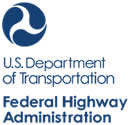U.S. Department of Transportation
Federal Highway Administration
1200 New Jersey Avenue, SE
Washington, DC 20590
202-366-4000

| Subject: | ACTION: Roadside Safety Hardware | Date: |
| From | Tony Furst Associate Administrator |
In Reply Refer To: HSST |
| To: | Division Administrators Federal Lands Division Engineers Safety Field |
Purpose
The purpose of this memorandum is to bring to your attention two primary issues related to guardrail end terminals that will require you to take action. As you are aware, we have been closely examining the performance of guardrail end terminals. It’s recognized that there are installation and maintenance challenges with these devices. As the construction season starts, and after the heavy winter, this is the appropriate time to pay particular attention to installation and maintenance issues. In this memo, FHWA emphasizes the need to have in place policies and procedures to evaluate the selection of roadside safety hardware relative to the roadway type, configuration and terrain; ensure its proper installation and maintenance; and periodically evaluate its in-service condition. In addition, we are aware there are some obsolete, non-crashworthy guardrail end terminals that still exist on the nation’s highway system. We have raised awareness regarding these terminals through previous memoranda issued over a number of years. We strongly recommend that you encourage the removal of pre-NCHRP-350 guardrail end terminals.
Background
It is FHWA policy that roadside safety hardware installed on the National Highway System (NHS) should be in compliance with the crash testing and evaluation criteria contained in the Manual for Assessing Safety Hardware (MASH) or its predecessor the National Cooperative Highway Research Program (NCHRP) Report 350. Devices that are compliant with either of these two sets of criteria are currently considered crashworthy devices.
It is critical that devices be installed and maintained properly so they are in the best position to perform as designed and tested. Attached is a technical brief titled "Selection, Installation, and Maintenance of W-beam Guardrail End Terminals" which highlights general guidelines regarding the selection, installation, and maintenance of W-beam guardrail end terminals. In addition, common issues of concern are identified with generally accepted practices to address these concerns.
Even when a successfully crash tested device is properly selected, installed, and maintained, individual crashes in the field are unique events and may result in performance that was not observed during crash testing. For this reason, a crash tested device should be monitored for its in-service performance, as indicated in both NCHRP 350 and MASH.
It is known that roadside safety hardware installed prior to the implementation of NCHRP 350 in 1993 remains on the NHS or other roadways across the nation. However, as indicated in the FHWA action memorandum, "Traffic Barrier Safety Policy and Guidance," dated 9/29/1994, non-crashworthy hardware should be removed and replaced with crashworthy roadside hardware at the earliest possible opportunity in concert with the maintenance of the roadway. It has been more than twenty years since that memo was issued and devices listed in that memo are still in service. We strongly recommend that pre-NCHRP 350 guardrail end terminals be removed and replaced.
Action
Please share this memorandum and its enclosure with your State DOT and any city, county or municipality in your State with responsibility for the operation and maintenance of their roadways.
Please ask them to review and, if necessary, update their policies, procedures, standards, and guidelines relative to the selection, installation, maintenance, and in-service evaluations of crashworthy roadside safety hardware on their roadways, specifically:
Finally, strongly encourage the highway agencies to increase their efforts to systematically upgrade pre-NCHRP 350 guardrail end terminals, particularly those that are on the NHS.
Resources
FHWA’s Office of Safety and the Safety and Design Team in FHWA’s Resource Center can provide training and technical assistance that focus on the proper selection, installation, and maintenance of guardrail end terminals to State Departments of Transportation (DOTs). Many states have taken advantage of this resource.
FHWA’s Office of Safety will offer assistance to help set up pooled fund arrangements to conduct in-service performance evaluations.
For more information, accessing the above resources, or if you have questions or comments, please contact Will Longstreet at (202)366-0087 or Nick Artimovich at (202)366-1331.
Attachment
